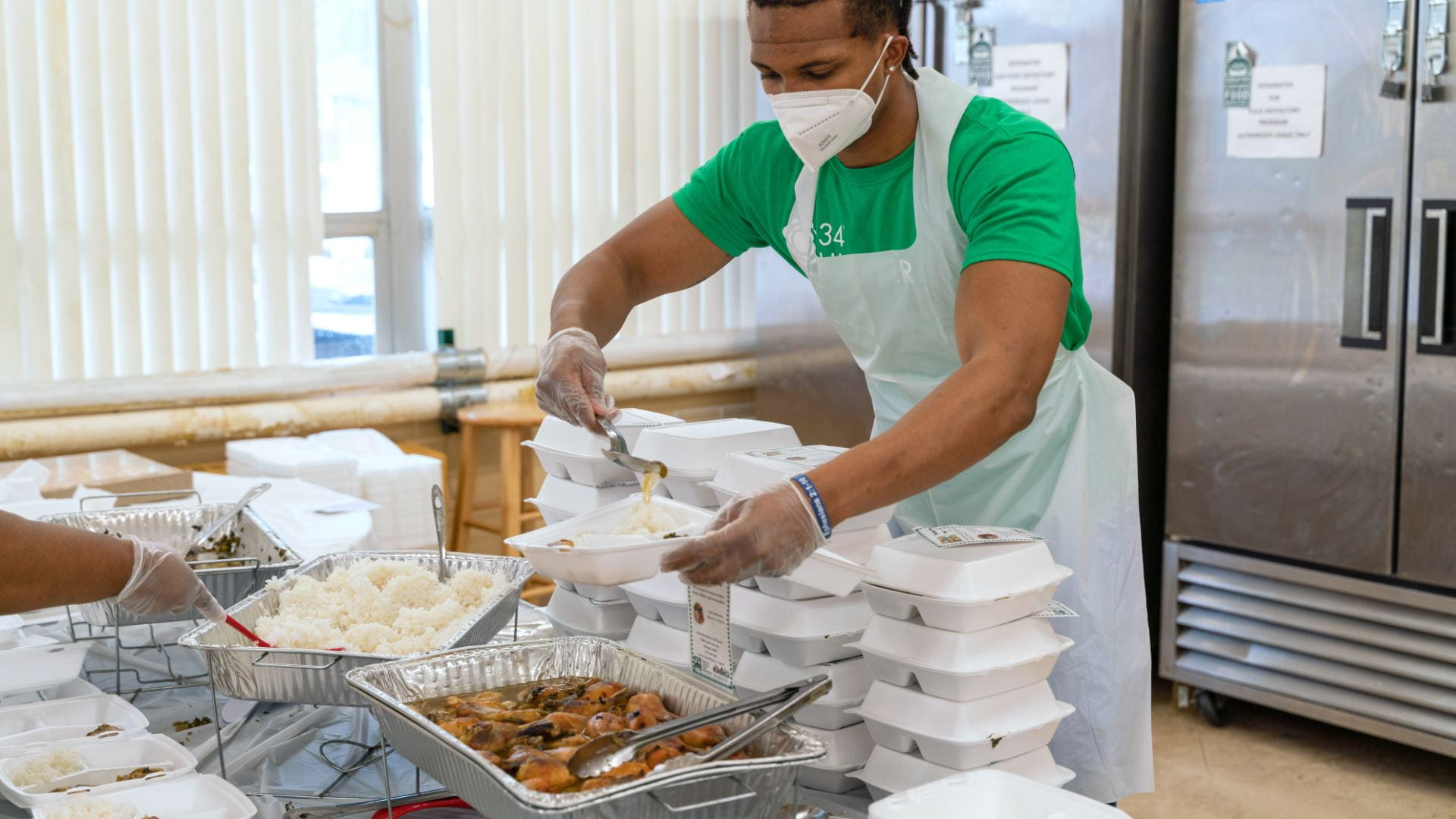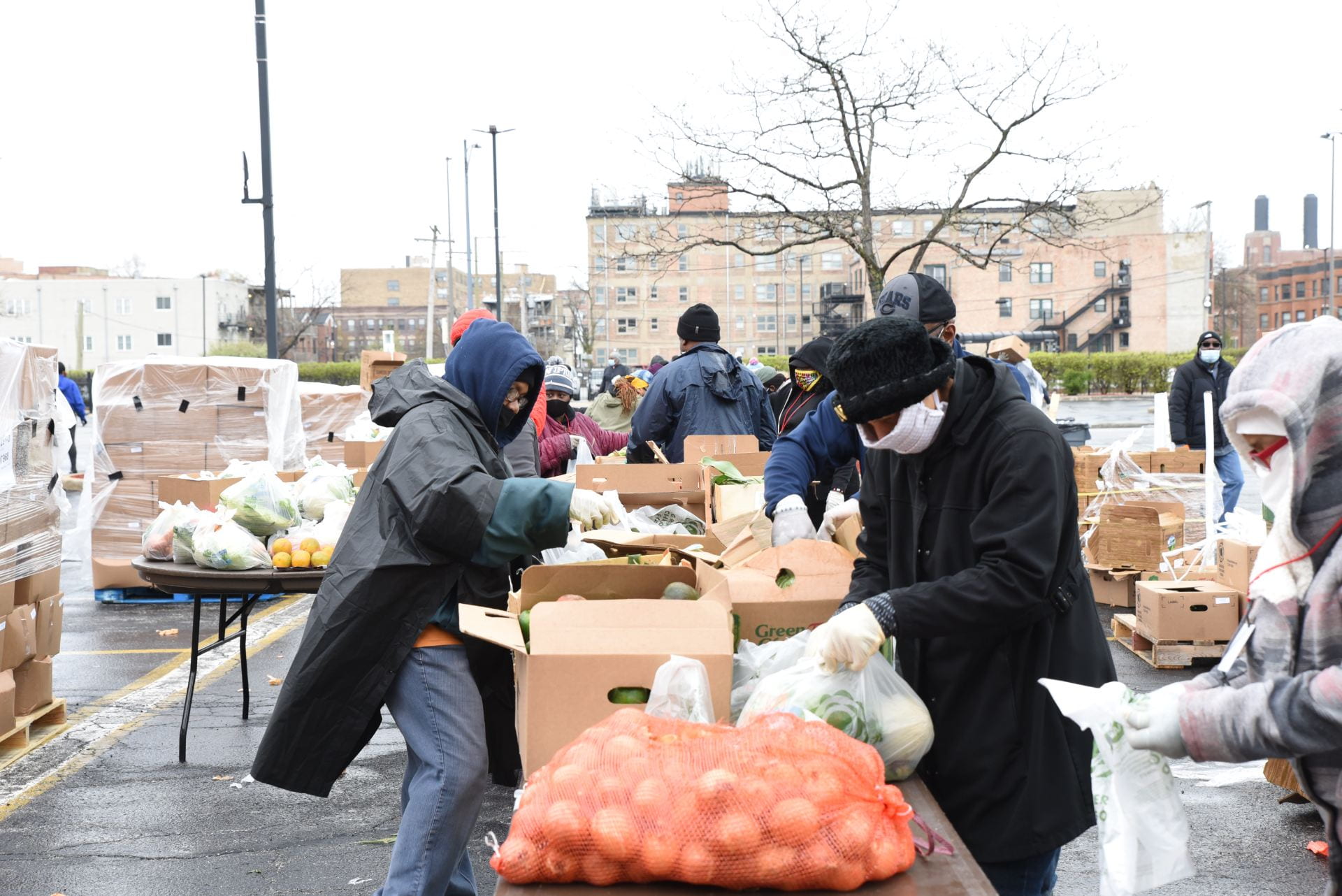
We’re trying to obtain a variety of foods, but at the same time we’re also trying to make sure we’re continuously getting food out into the communities especially those that have been direly affected by the crisis.
— Sheila Creghin (MBA ’84, JD ’89)

“If I’d had a crystal ball,” says Sheila Creghin (MBA ’84, JD ’89), reflecting on when the coronavirus pandemic erupted in the United States back in March, “I would have made sure we were extra stocked up on shelf-stable food items and hygiene supplies.”
But there is never a sure way to know when a crisis beyond your control is going to strike and rattle the way you run your business. As vice president of operations at the Greater Chicago Food Depository, Creghin found herself, like many leaders of organizations affected by COVID-19’s challenges, in a sink-or-swim situation.
The Greater Chicago Food Depository, dubbed “Chicago’s Food Bank,” distributes food to communities in need throughout Chicago and Cook County. Its large facility sits on a spacious lot on the South Side of Chicago, a hub that distributed more than 93 million pounds of food in the last year to a network of 700 community partners. “The demand for food has increased by upwards of 50% because of the pandemic,” Creghin says. “Many of the people we serve work in industries that were greatly impacted by the virus, like restaurants, so they were out of work and unable to buy food.”
Before COVID-19, the depository served as many as 800,000 people per year. Now, Creghin says, visits to local food pantries have more than doubled. By the time their fiscal year ended in June 2020, they had distributed 18 million pounds more food than the previous year because of COVID-19 and its economic impact.
“The crisis has disrupted so many aspects of our business model and operations. For instance, we’re big advocates of client choice, in respecting the dignity of people by allowing them to pick like they would at a grocery store what items they want to take home to their families,” Creghin explains. “COVID-19 has forced us to scrap that model to avoid a high-touch atmosphere and resort to distributing boxes of food that we have had to package ourselves.”
Acquiring the food itself has been another challenge. “We’ve struggled with procuring nonperishable foods because of how much people have been buying off the shelves,” Creghin says. “We’re trying to obtain a variety of foods, but at the same time we’re also just trying to make sure we’re continuously getting food out into the communities, especially those that have been direly affected by this crisis.”
Creghin and her team of roughly 100 employees comprising drivers, warehouse workers and facilities staff have been working long hours throughout the pandemic to meet the increased needs of their clients. Implementing social-distancing guidelines and other protocols to keep employees safe has required adapting to new processes. Drivers who transport food to communities, for example, are no longer accompanied by an assistant who helps to unload the food. As a result, the depository has had to invest in equipment to help its drivers safely unload hundreds of pounds of food from trucks on their own.
“It’s been challenging, but a crisis also offers learning opportunities,” Creghin says. “It forces you to examine the systems you have in place and come up with new and creative ways to get the job done. I’ve empowered so many of my team members during this time, and it’s been inspiring to see them rise to the occasion with incredible leadership and dedication under such difficult circumstances.”
Creghin shared these tips for crisis leadership:
- Listen and communicate. Communication during a crisis is critical, especially when you are managing people in different roles and at different levels. Listen and be empathetic to the needs and concerns of your employees so you can support them in their new working environment. Listen for feedback because some people may have access to data or information that can help drive better decisions. You also need to make sure everyone understands the plan on how to move forward. Sometimes you may feel like you are overcommunicating, but during a crisis, things can change quickly and frequently, so constant communication is important.
- Be flexible. When you create your crisis management plan, realize that you may have to change that plan at any time depending on how the crisis evolves. Make sure your team also is ready to adjust course if the situation warrants it.
- Stay calm. As a leader, if you overreact or appear overly stressed, you make your team nervous and stressed. Approach the crisis with a calm, level head and recognize that you set the tone for how your team handles the situation at hand. I always say, “Today we’re going to do our best and do as much as we can, and tomorrow is another day.” That’s all you can do during a crisis: face each day as it comes.
By Nadia Alfadel Coloma | Photos courtesy of Chicago Food Depository


